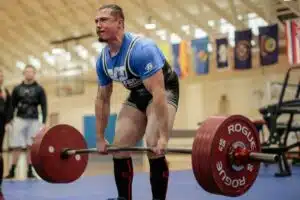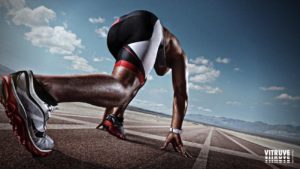What is speed and how is it trained in young athletes?
Speed is a physical ability that determines, on many occasions, the triumph of sports performance. Speed is crucial for a large number of sports, from the well-known football to tennis and even athletics. Speed often determines a performance result. In swimming, for example, swimming speed will determine whether you win or lose a competition. In golf, the speed at which you hit the ball defines the power of each stroke, and the final result will depend on it, since if I can get further in fewer strokes, I will reduce my par. Similarly, the speed achieved in a javelin throw is transferred to the throw itself.
It is for all these reasons that speed is key when analyzing sports performance. Moreover, if we focus on football, it has been shown that during a match there is an average of one sprint every 90 seconds and being as fast as possible will allow you to overcome the opponent and increase the probability of success in any action (1). On the other hand, we consider it important to train speed and agility in young athletes during their early stages. Speed training for young athletes should be a “must” in their preparation.
On this occasion from Vitruve’s blog we are going to analyze the different methodologies used to improve speed in sport and see which of them is most useful. To do this, we will use a systematic review conducted by Behm, D. and collaborators with more than 100 articles analyzed (2). Among the methodologies that can be used to improve speed, we highlight strength training and power training. Before starting with them, we should differentiate what each of them focuses on. For example, power training is based on the application of low loads with a high execution speed with the aim of being faster in the application of force. An example of power improvement would be to increase the speed of throwing a baseball. On the other hand, strength improvement is based on achieving a given number of repetitions, but with a higher weight and similar execution speed. The ranges of strength improvement can go from 3 repetitions to approximately 10-12. Thus, an improvement in strength would be to move a heavier weight during the same range of repetitions and at the same speed of execution. Both methodologies will help us to improve speed in our young athletes.
First of all, we would like to emphasize that speed depends on the stretching and shortening cycle that occurs in the muscle. The possibility of lengthening and shortening the muscle efficiently and quickly makes the speed of execution of any movement much greater (3). In this way we will be faster whatever our sport modality is. This cycle of stretching and shortening occurs when performing specific speed and agility training for young athletes.
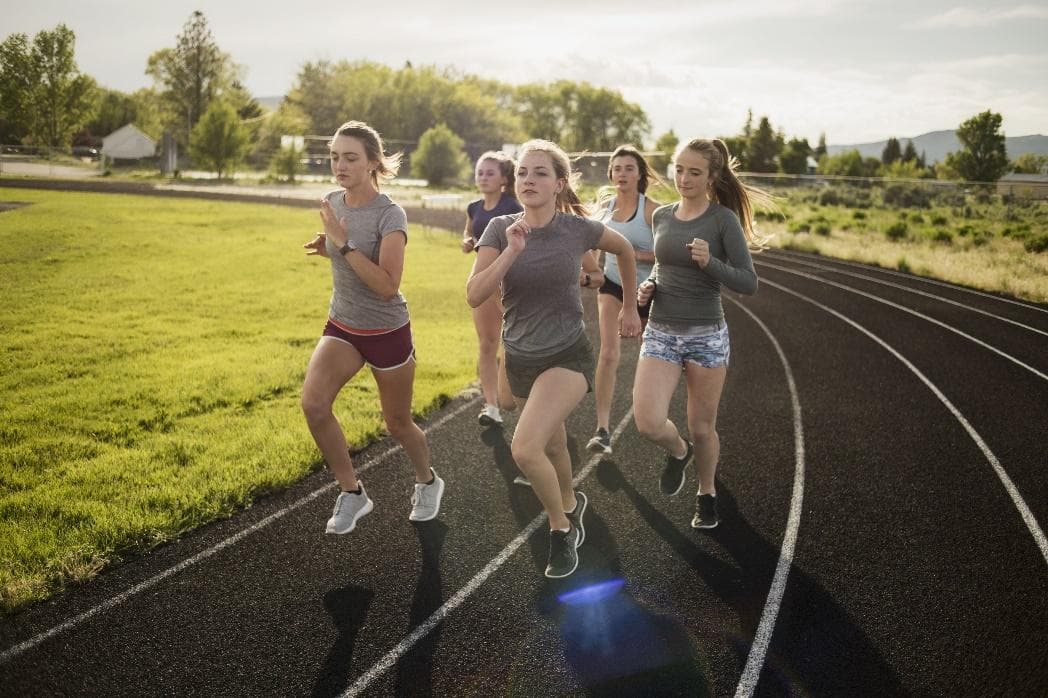
Strength training and speed improvement in young athletes
First, let’s analyze what the scientific literature says about strength training and speed improvement. It is important to keep in mind that speed in young athletes often depends on muscular strength. Being stronger can be related to higher running speed so being stronger could be interesting.
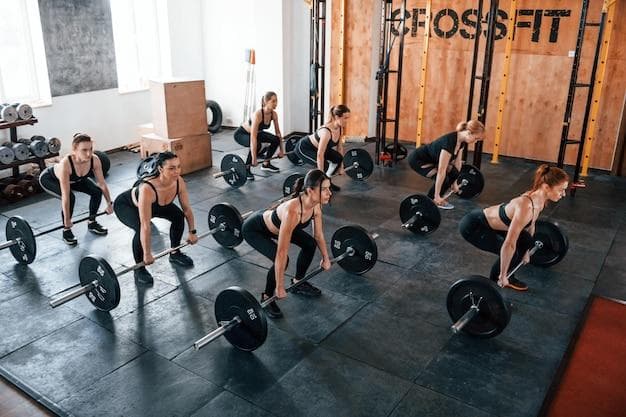
Source: https://www.freepik.es/fotos-premium/junto-barras-grupo-jovenes-deportistas-tienen-dia-crossfit-interior-gimnasio_28309206.htm
In this case, we are going to focus on the results of the study carried out by Chelly and collaborators (4) in which, within a football team, a 2-month intervention was carried out with a group that performed strength exercise two days a week (experimental group) versus a control group that did not perform strength exercise. In addition to measuring power variables such as countermovement jump (CMJ) or maximum watts that could be moved on a cycloergometer, speed was measured in a 40-meter sprint. The speed of the sprint was measured with 3 variables: speed of the first step, speed in the first 5 meters and maximum speed. The training performed was oriented to strength gains in knee extensor muscles such as the squat and was structured to have a progressive overload during the 8 weeks. The MR calculation was performed at the beginning of the study and at 4 weeks. The training carried out by the 17-year-olds consisted of:
– 7 repetitions at 70% of the maximum repetition (RM)
– 4 repetitions at 80% of the RM
– 3 repetitions at 85% of the RM
– 2 repetitions at 90% of RM
After this intervention with strength exercise, the speed and agility parameters improved significantly in the group that performed the exercise training. The age of these participants corresponds to young age so we could confirm that strength training as proposed in this study can help to improve the sprint speed of young athletes.
However, depending on the training planning and the type of exercise, the result may not be as positive. Thus, the study by Contreras, B. et al. (5) does not seem to find an effect of strength training on sprint speed. On this occasion the age group of the population was similar since the participants were between 14-17 years old and performed strength training. In this case, apart from another series of measurements, a 20-meter sprint test was performed in which they took the speed at 10 meters and 20 meters. Unlike the previous study, the type of exercise and the group formation was different.
In this case they were divided into 2 groups; the first group performed strength training with front squat movements and the second group performed the same training only with the hip-thrust movement. The study had a total duration of 6 weeks in which two days a week they performed an exercise protocol. Below, we present the training structure performed by the participants:
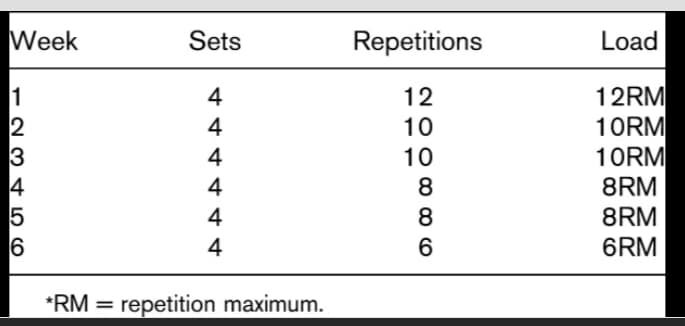
Table 1. Planning of the training carried out in the study of Contreras B. et al. (5)
Each group performed this same structure, but with different movements for 6 weeks. The authors point out that during the first week, 60% of the 3 RM calculated in a previous test was used. Likewise, the authors indicate that the participants also performed upper body strength training in all training sessions.
The result of this research is totally contrary to that found by Chelly and collaborators. So much so, that this research group found no significant difference in sprinting after the application of these strength exercise protocols training the Hip Thrust or training the Front Squat. It seems that the type of exercise used and the way it is administered are key in determining whether strength training is useful for improving speed or agility in young athletes.
Plyometric training and speed improvement in young athletes
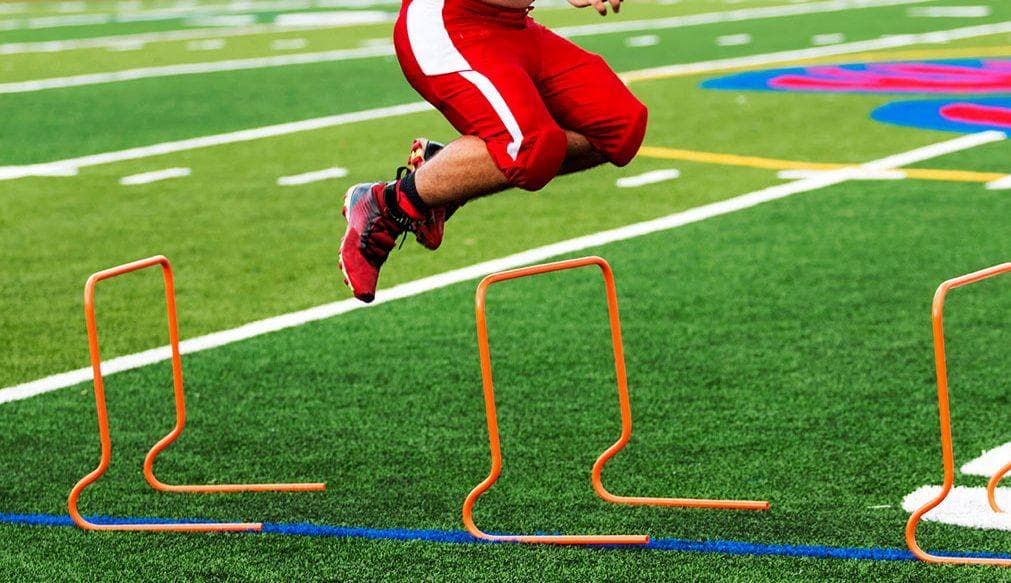
We will now move on to analyze another type of training that can have an impact on speed: plyometric training. Plyometrics is based on the series of jumps over a given period of time. The combination of jumps in plyometric training is very diverse; you can start with speed loss exercises, receptions, multi jumps, big jumps, small jumps or even the skipping rope. We understand that the repetition of several stretch-shortening cycles can produce improvements in the speed of young athletes. For this purpose, on this occasion we will begin with the study carried out by Chaouachi, A. et al. (6) in which they measured, among other variables, the speed of performing 20 meters at maximum speed. As in the training carried out in the aforementioned studies, two training sessions per week were carried out for a total duration of 12 weeks. Likewise, the participants were children between 10 and 12 years of age and were divided into 4 different groups to perform 4 types of training: i) Olympic movements, ii) strength training, iii) plyometric training and iv) control group.
This intervention had the same training volume for all groups. It is curious that they used the same training volume when the loads are not the same for each exercise nor for each training method. Below, we detail the type of planning followed by the participants:

The exercises selected for each group were among others:
- Olympic movements:
- Clean
- Snatch
- Plyometric:
- CMJ
- Drop Jump
- Burpee
- Strength training:
- Squat
- Strides
- Pushups
The results of this study were not encouraging for plyometric training since it did not seem to favor an improvement in speed when performing the 20-meter sprint. None of the 3 training methodologies seemed to be efficient in improving the 20-meter sprint in a clear way. However, strength training with one’s own body weight did seem to be the most indicated to improve this variable. It should be noted that the training planning carried out leaves much to be desired due to the lack of specificity given to each exercise or each type of training. In addition, it is true that the training volume will have been the same, but if we take into account the intensity the workouts change in quantity.
What are the 3 types of speed training?
There are multiple ways to train speed but we are going to highlight 3 types of training that should never be missing in a speed training for young athletes. When working with children or teenagers it is important that they have fun while getting physical exercise. One way to train speed is by proposing exercises that involve small doses of exercise at high speed and high intensities. We highlight the following:
Playful games
Games are a wonderful way for a young athlete to train speed. Playful games are not a type of training per se, but if we plan them with some common sense, they can be a very important part of the young athlete’s preparation to improve speed. Within the recreational games, any game that involves a situation of speed at high intensity will allow the athlete to improve his cardiovascular capacity and speed. An example of training similar to the playful games is the performance of repeated “sprint”. If we get our athletes to play games during their training sessions, we will improve their speed.
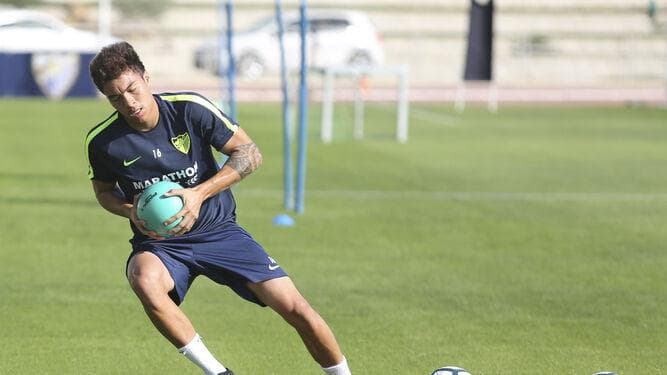
Source: https://www.malagahoy.es/malaga_cf/Penaranda-aplica_0_1191181021.html
Hill training
Hill training is also a good option to improve speed. This type of speed training involves a high intensity in a short period of time. As with any physical capacity, progressive overload should be a priority, i.e., we should start with slopes that do not have a steep incline and gradually increase both the intensity of the slope and the duration of the race. In the same way, we do not recommend starting speed training for the young athlete with hill training because the intensity is high. If we do not have hills in our training place a good idea is to perform the same training but with some resistance such as parachutes or our own partners.
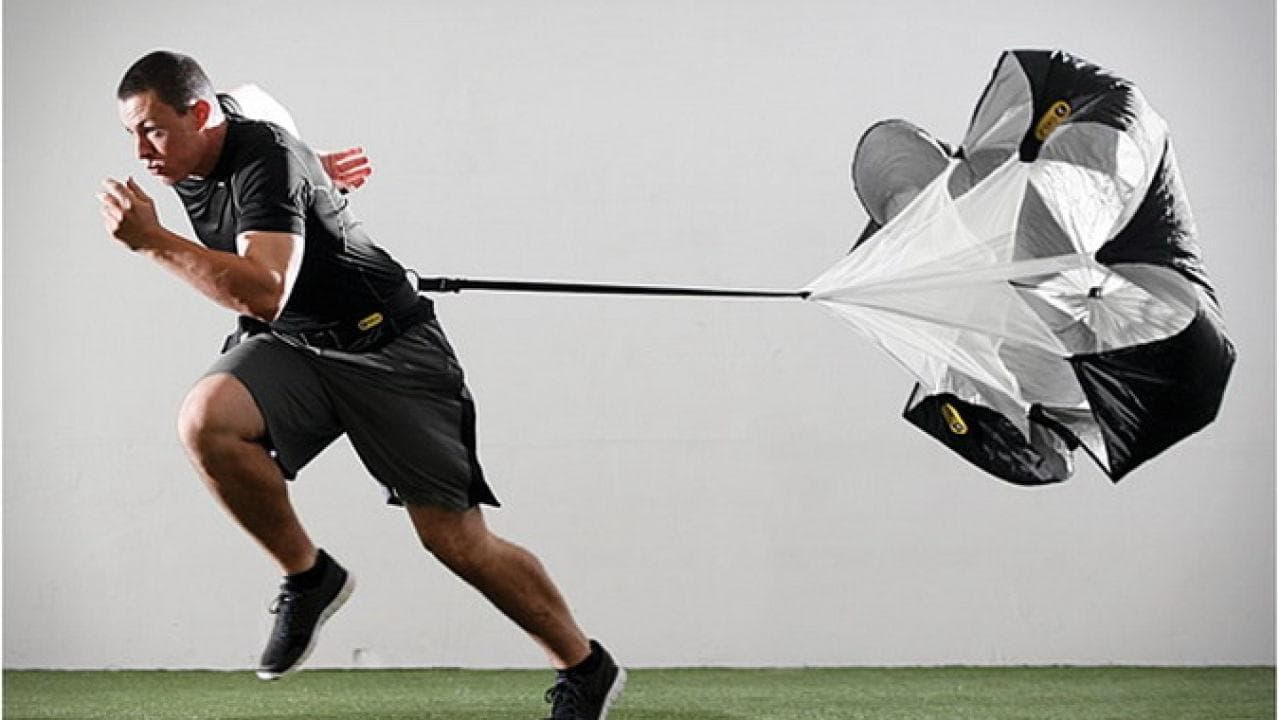
Source: https://www.correryfitness.com/running/estos-dos-ejercicios-velocidad-correras-rapido-como-cristiano-ronaldo_2015032057d905bb0cf2c29133d0b352.html
Interval training
As we have been saying throughout this blog post, interval training is important to improve the speed of the young athlete. Periods of high intensity scatter with periods of lower intensity will provide sufficient stimulus to increase speed. Playful play scatters moments of high intensity with moments of lower intensity, but in a random manner and without any logical sense. Interval training, however, is prepared with a sense.
Here is an example of how an interval running training could be structured. This example will depend on the level of our young athlete, in this case, we assume a medium level athlete: 1 minute at 4:30/km – 5 minutes at 5:30/km – 1 minute at 4:20/km – 5 minutes at 5:30/km. This is a very simple example for the coach to get an idea of how to plan this type of training.
The most professional way to do this is not by speed/km but by the speed to which a specific oxygen volume corresponds. However, it is not very common to have these values in a young athlete so we can use the maximum heart rate or the athlete’s subjective perception of effort.
What are the best exercises for speed in young athletes?
Here are some sample videos of the exercises that were performed to improve the athlete’s speed in case it could interest a coach:
Conclusion
By way of conclusion, we would initially like to recommend that if any athlete is thinking of doing an exercise intervention with the objective of improving the speed of the young athlete to first evaluate the importance of speed in their sport modality. Secondly, we would like to comment that from what we have seen, there is no specific type of training, beyond well-planned strength training, that can benefit speed gains in young athletes and speed training itself. In order to have greater control of the load during strength training it is important to use systems that measure power, range of motion and speed of execution itself. For this, the velocity-based training (VBT) allows us to have control of these variables. From Vitruve’s blog we recommend using velocity or speed control systems such as Vitruve’s linear encoder for quality training.
We have already seen that depending on the type of structure we follow there will be speed gains or not. Depending on the sport modality this speed will have to be rectilinear, carrying an object, with changes of direction or with a moving medium. The speed and its improvement will depend to a great extent on the sport modality we practice and it’s training as well. If we plan to start speed training with our young athlete, without a doubt, a good choice is to use games, slopes and interval training.
Unai Adrián Perez de Arrilucea Le Floc’h
References
- Reilly T. A motion analysis of work-rate in different positional roles in professional football match-play. J Human Movement Studies. 1976;2:87-97.
- Behm DG, Young JD, Whitten JH, Reid JC, Quigley PJ, Low J, et al. Effectiveness of traditional strength vs. power training on muscle strength, power and speed with youth: a systematic review and meta-analysis. Frontiers in physiology. 2017;8:423.
- Komi P. The stretch-shortening cycle and human power output. Human muscle power. 1986:27-39.
- Chelly MS, Fathloun M, Cherif N, Amar MB, Tabka Z, Van Praagh E. Effects of a back squat training program on leg power, jump, and sprint performances in junior soccer players. The Journal of Strength & Conditioning Research. 2009;23(8):2241-9.
- Contreras B, Vigotsky AD, Schoenfeld BJ, Beardsley C, McMaster DT, Reyneke JH, et al. Effects of a six-week hip thrust vs. front squat resistance training program on performance in adolescent males: a randomized controlled trial. Journal of strength and conditioning research. 2017;31(4):999-1008.
- Chaouachi A, Hammami R, Kaabi S, Chamari K, Drinkwater EJ, Behm DG. Olympic weightlifting and plyometric training with children provides similar or greater performance improvements than traditional resistance training. The Journal of Strength & Conditioning Research. 2014;28(6):1483-96.




